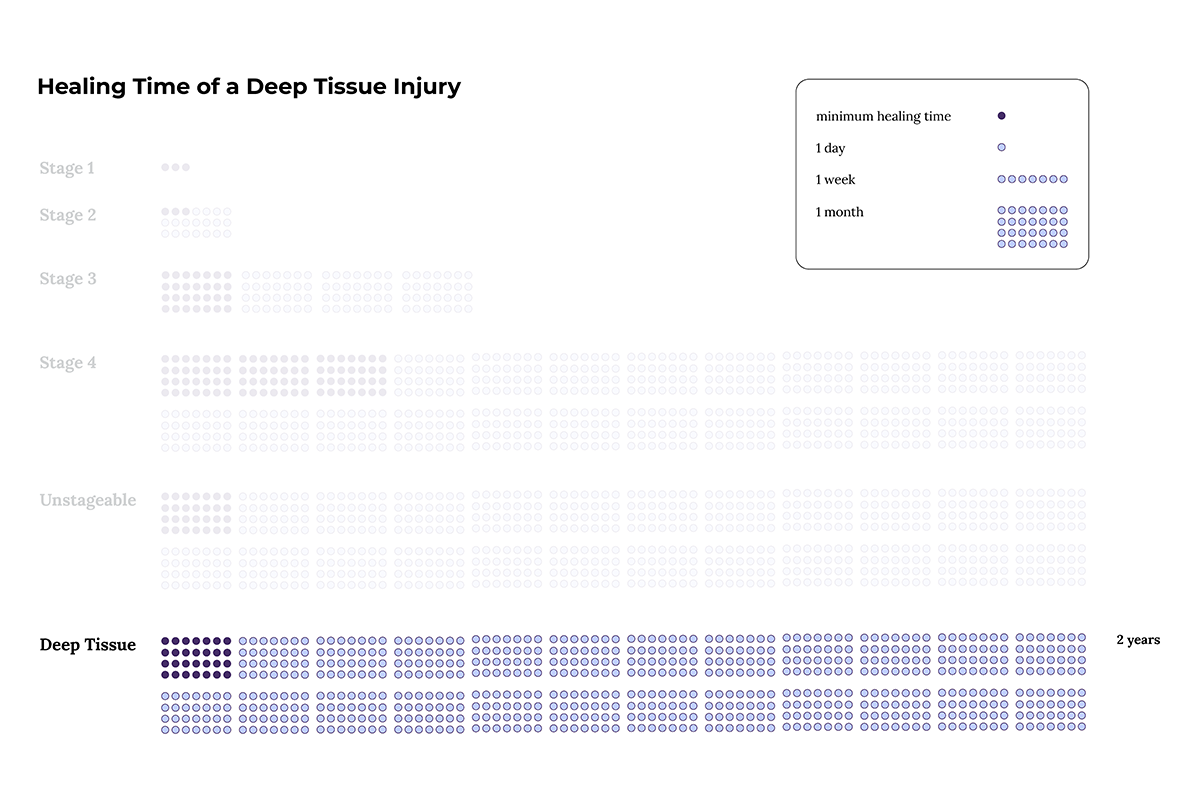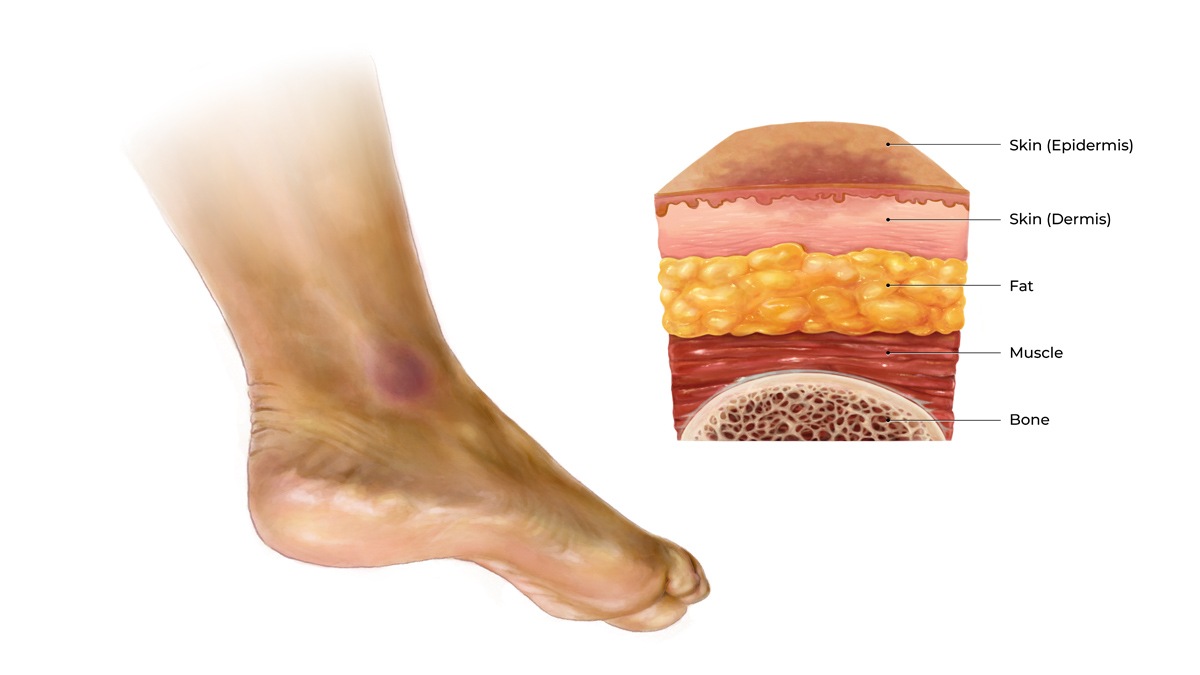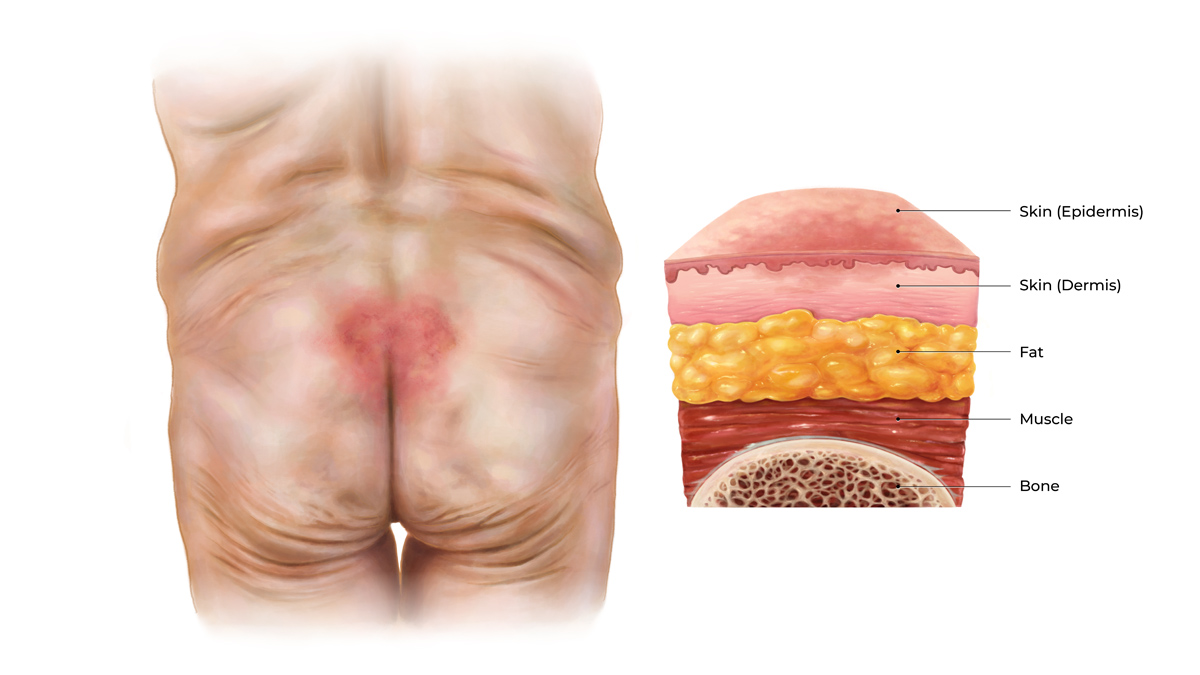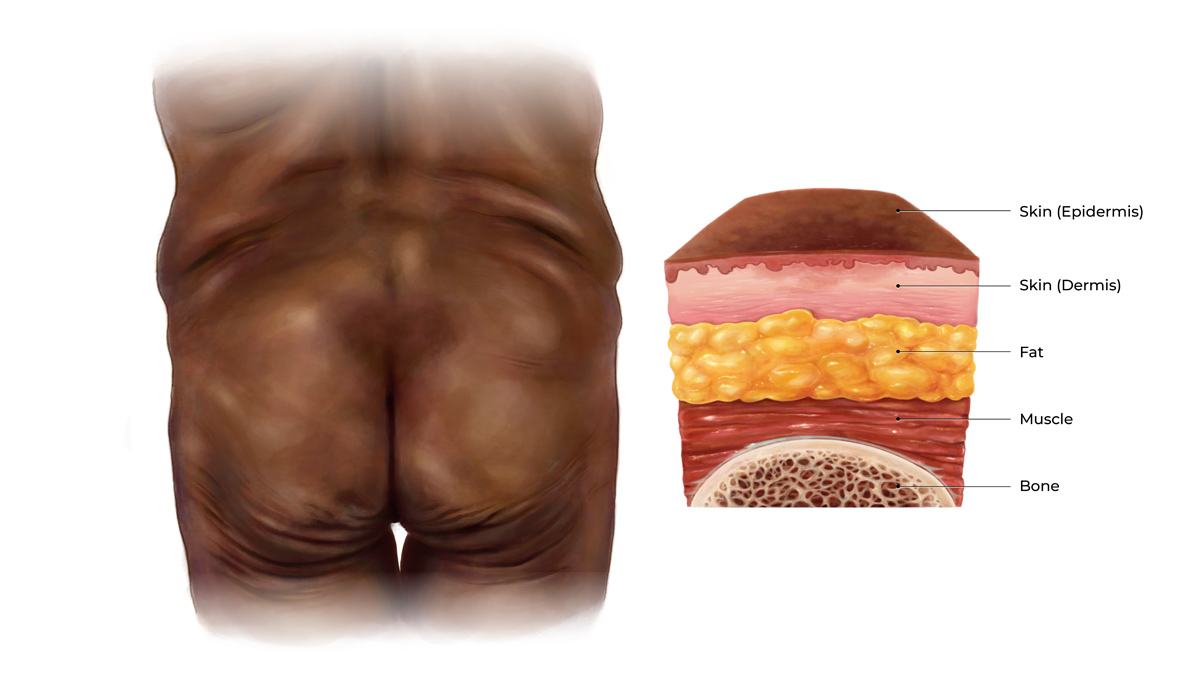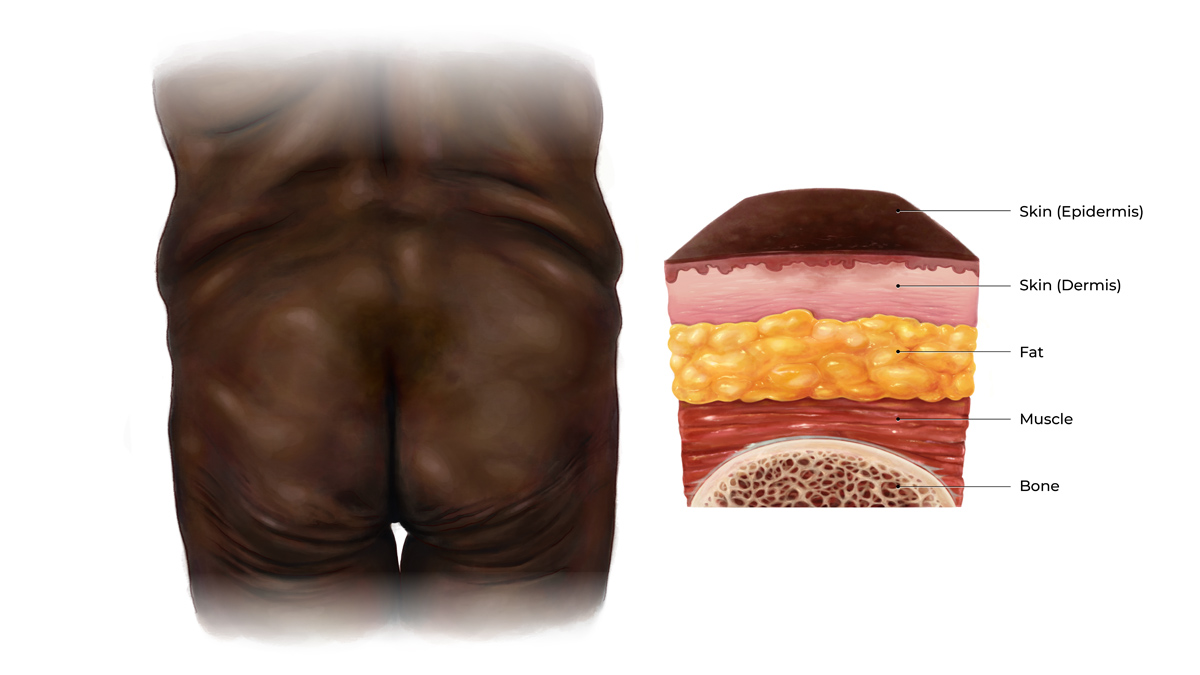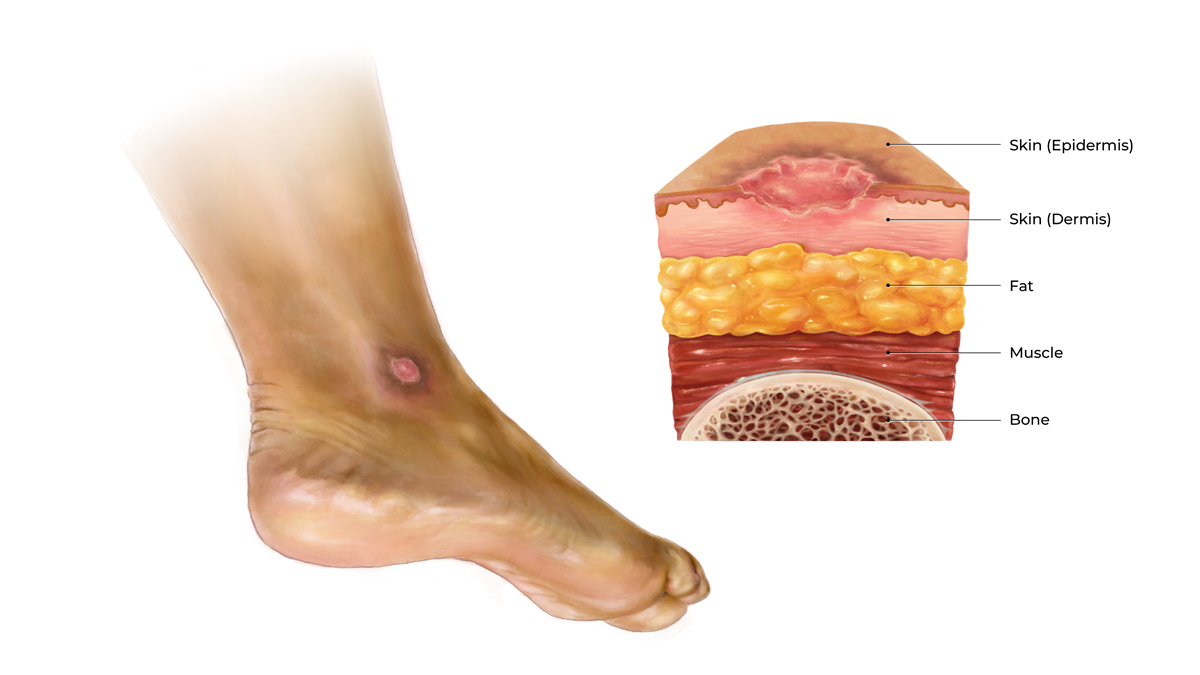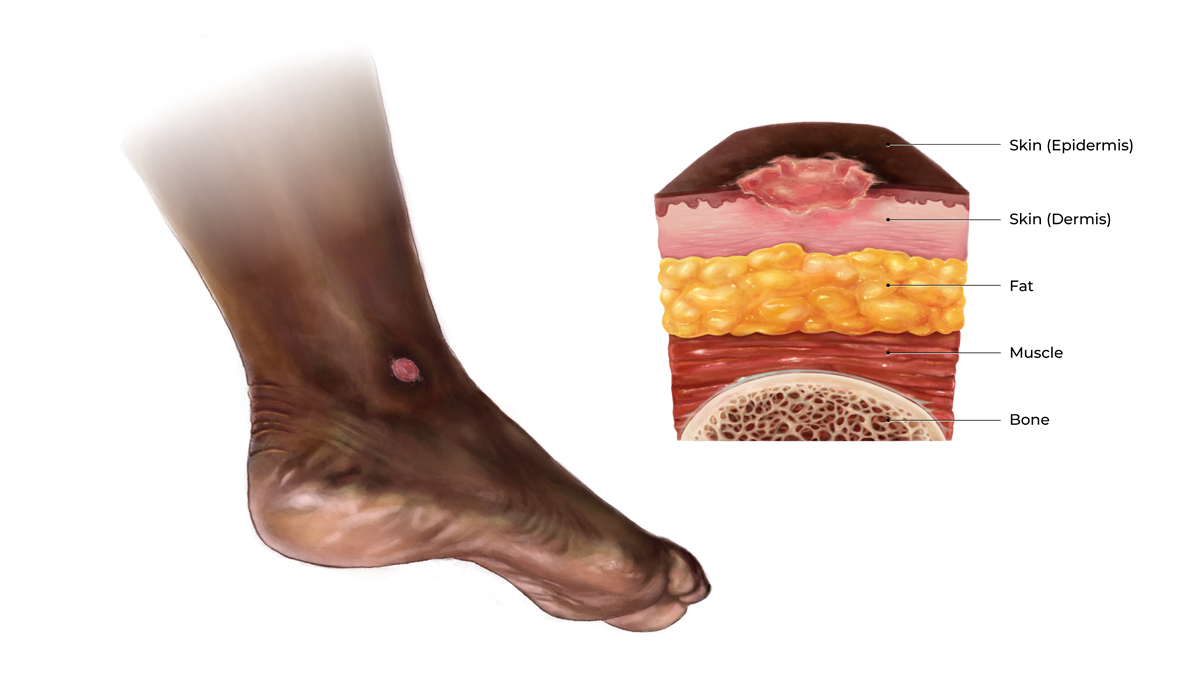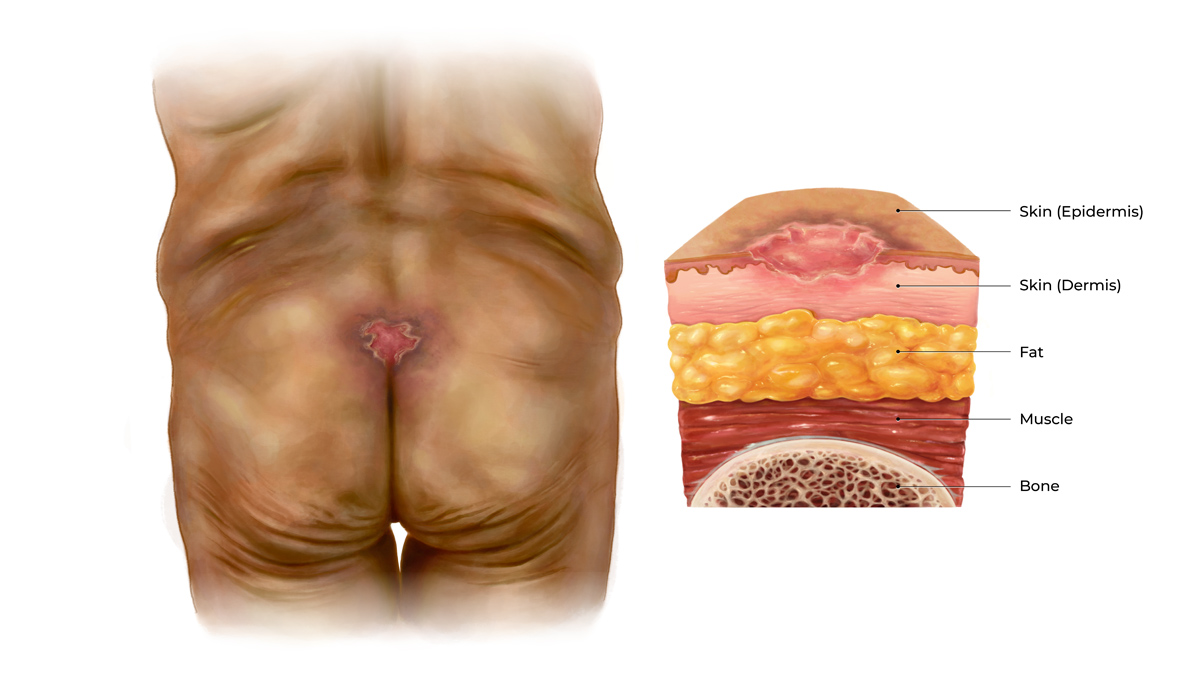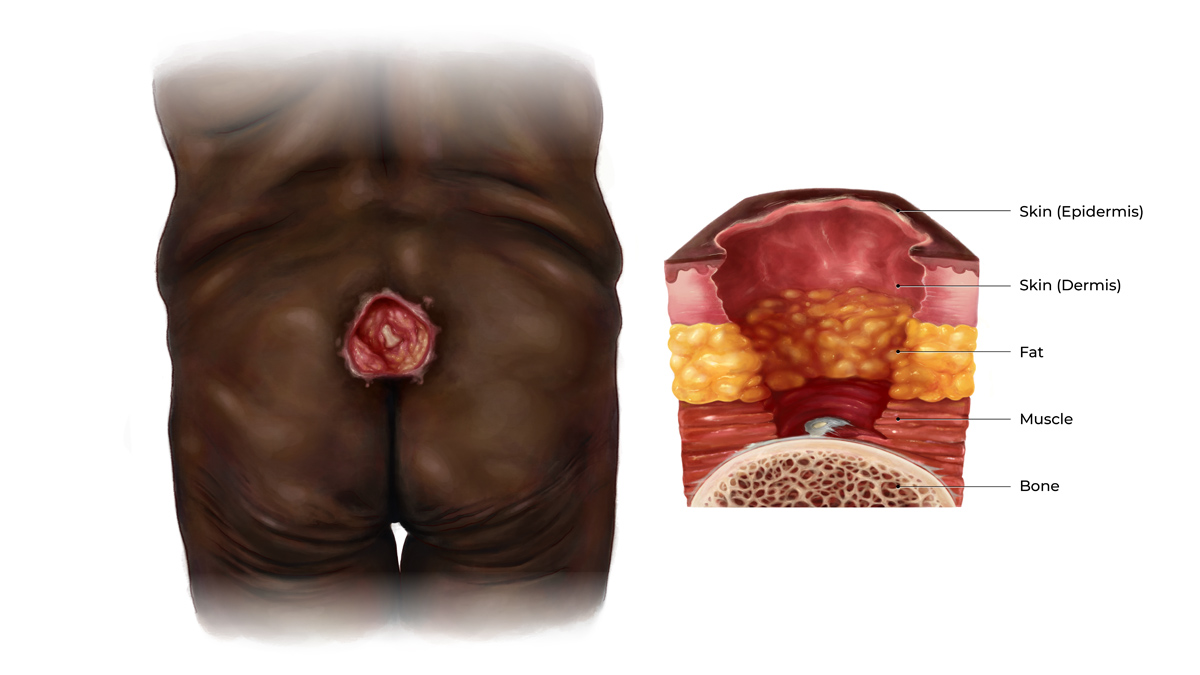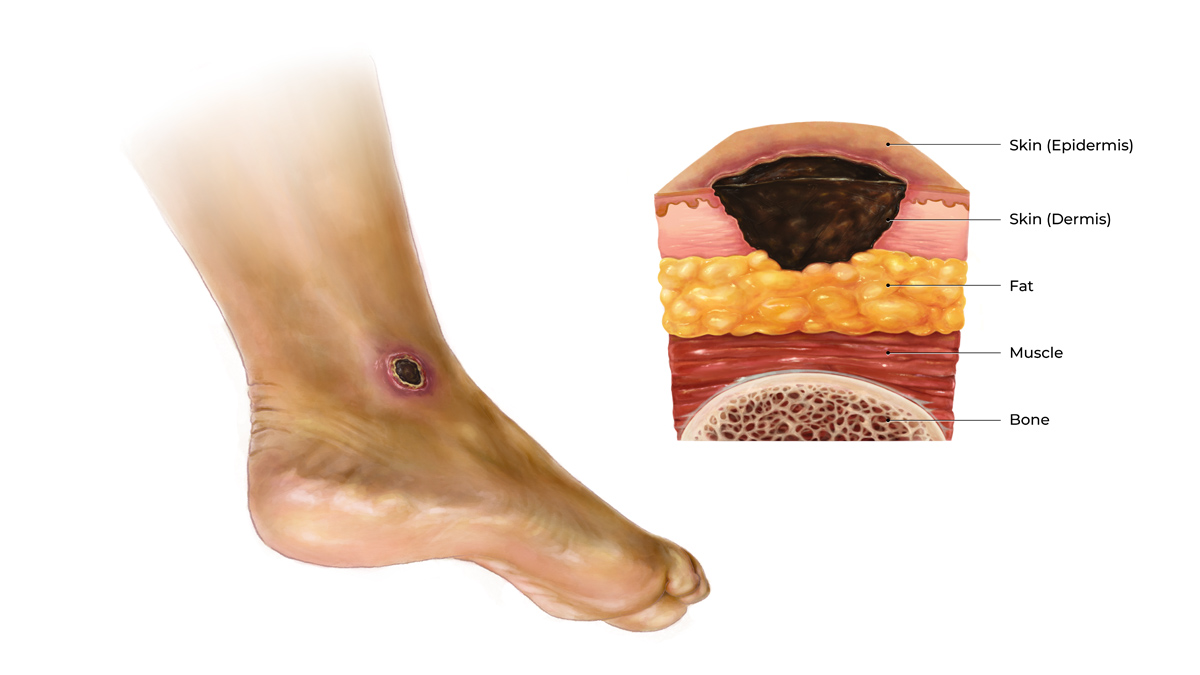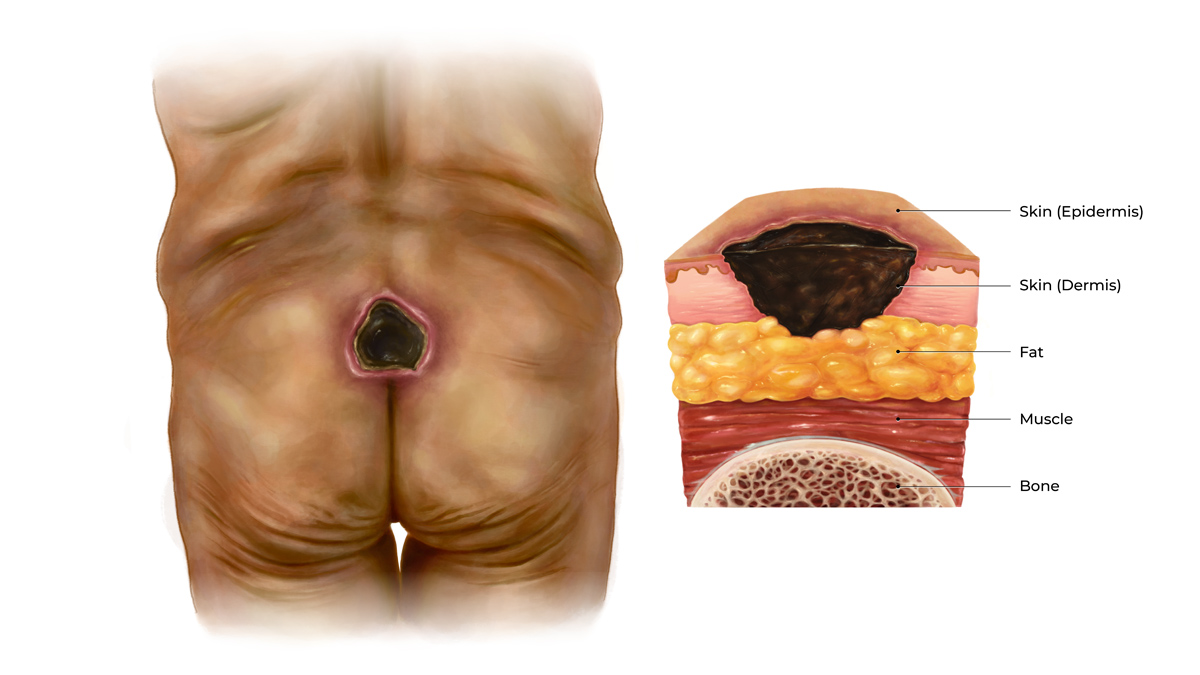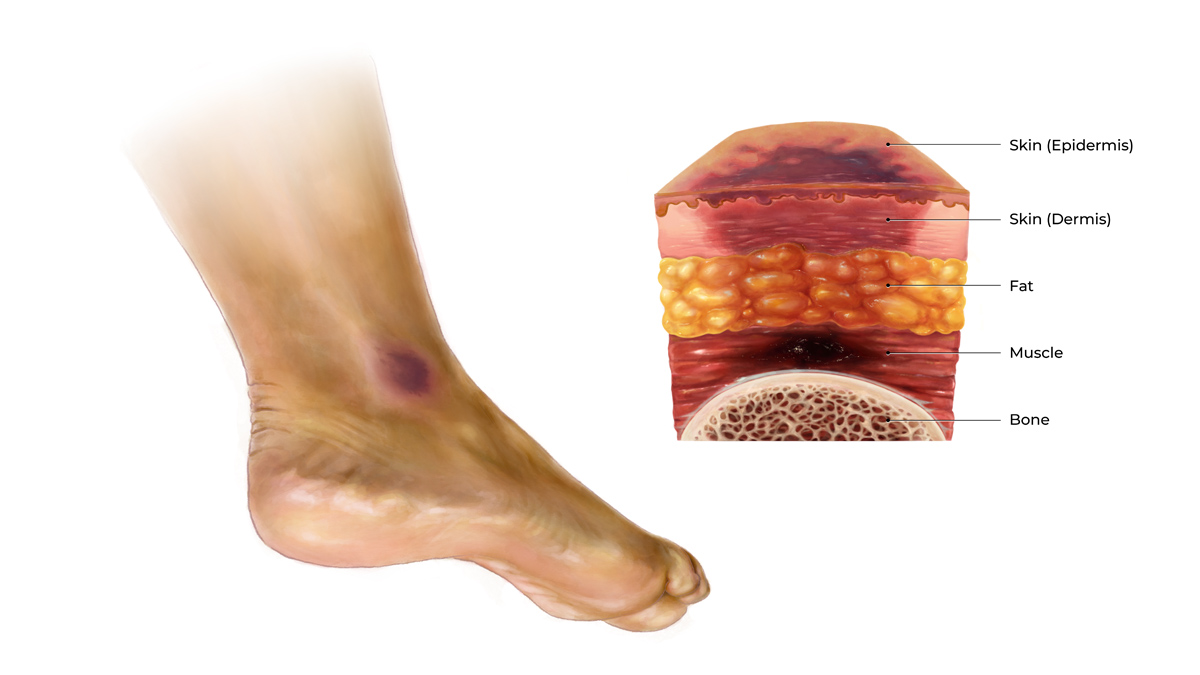Recognizing Pressure Injuries and Their Stages
An early sign of a pressure injury is skin discoloration. Lighter skin may turn red and will not lighten, or ‘blanch,’ when pressed.
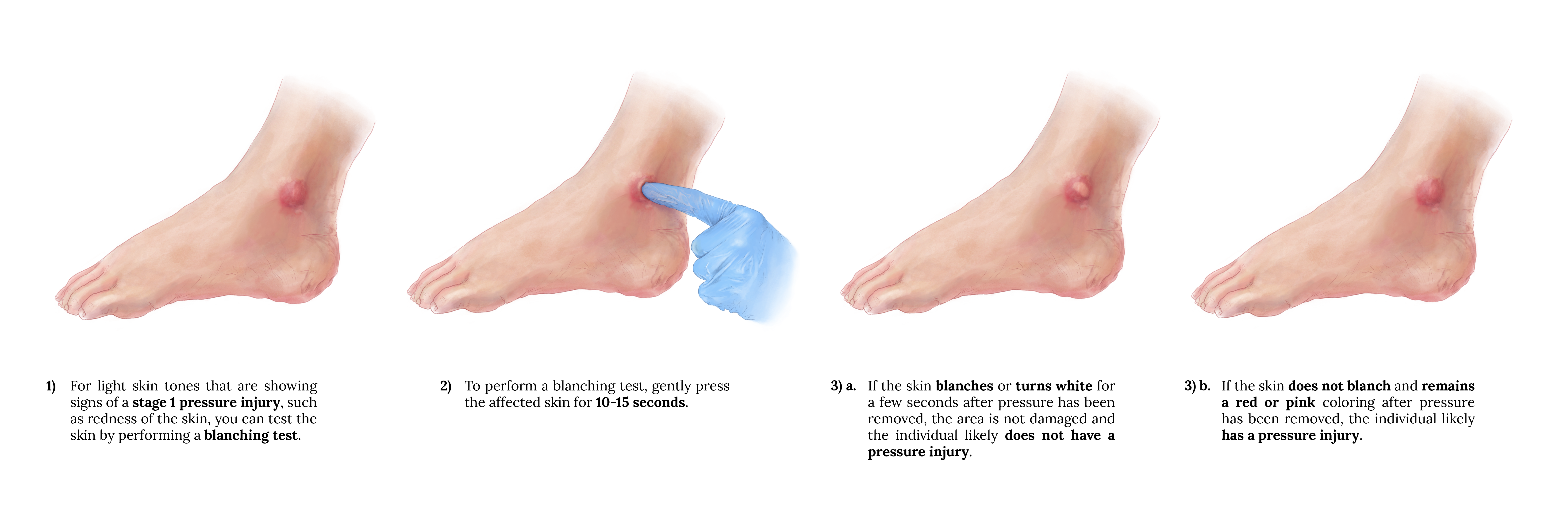
Dark skin may appear bluish or purple, similar to a bruise, and frequently won’t show the same blanching response when pressed. The skin may also feel warm to the touch, feel spongy or hard, and may be itchy or painful.
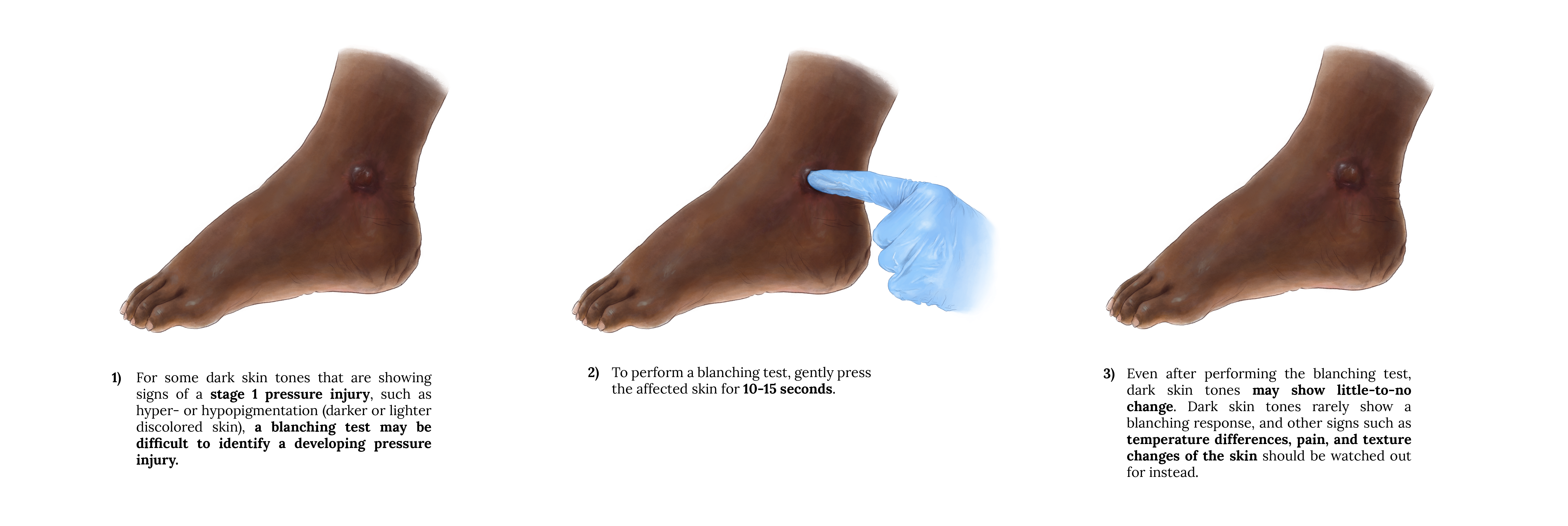
These injuries can start small but change rapidly, even within a few hours. Pressure injuries can be divided into 6 categories, or stages, and are graded on how deep the damage goes beneath the skin’s surface.
Pressure Injury Stages
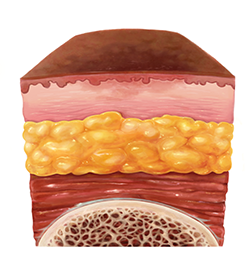
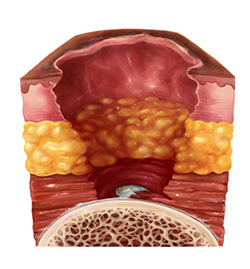
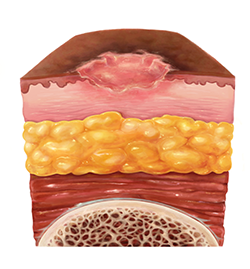
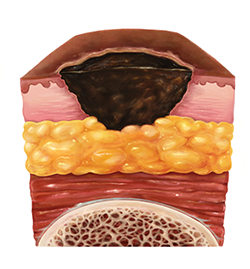
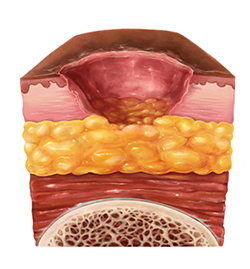
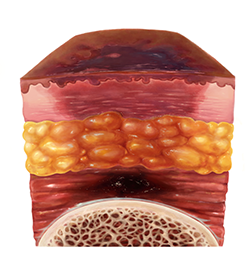
Stage 1 Pressure Injuries
Stage 1 pressure injuries can be described as intact skin that visibly shows a change in skin color. Discoloration may be red, blue, or purple depending on the skin tone of the person affected.
Click through the illustrations to see how pressure injuries may look on different skin colors and body parts.
What to look for:
A discolored patch of skin that does not fade within a period of 30 minutes after pressure has been removed. The skin is not broken but may feel different. It may feel warmer, cooler, firmer, softer, or even itchy or painful.
For those with lighter skin, if redness is present, a blanching test may be appropriate. If you press the red skin, and it does not turn white, that is a sign that they have a stage 1 pressure injury. For those who have dark skin, a blanching test may not be appropriate. Keep an eye out for patches of skin that are discolored and feel different from the surrounding skin.


Healing Time
With the total removal of pressure, a stage 1 injury can heal in about 3 days. This time depends on factors such as the individual's nutritional intake, age, and whether they are following offloading routines or taking any medications.
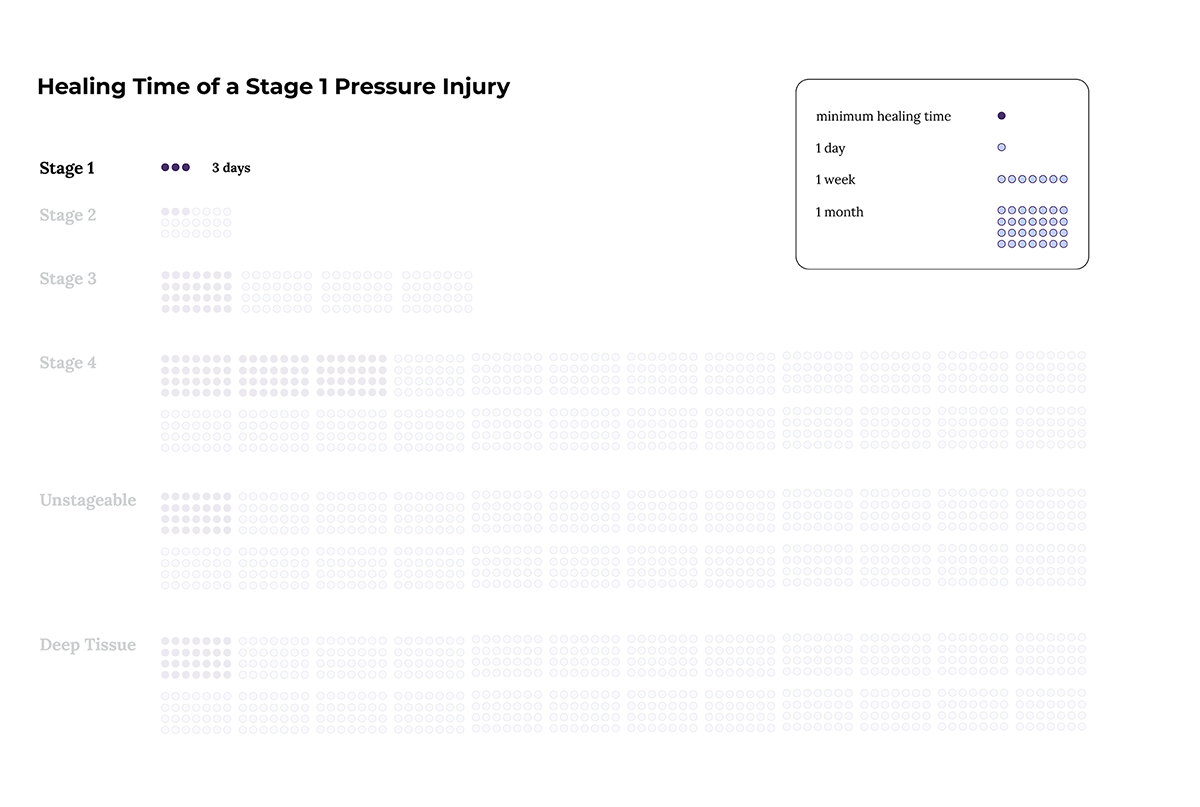
Stage 2 Pressure Injuries
A stage 2 pressure injury is an open wound where the top layer of skin is missing.
Click through the illustrations to see how pressure injuries may look on different skin colors and body parts.
What to look for:
A shallow wound that resembles a scrape or blister. Some of the skin is missing and you can see the tissue underneath, called the “dermis.” The open wound is pink or red, and may be wet. Intact and fluid-filled blisters are also considered as stage 2 pressure injuries.
Healing Time
If all pressure is removed, a stage 2 injury could take 3 days to 3 weeks to heal. This timeline varies depending on factors such as the individual's nutritional intake, age, and whether they are following offloading routines or taking any medications.
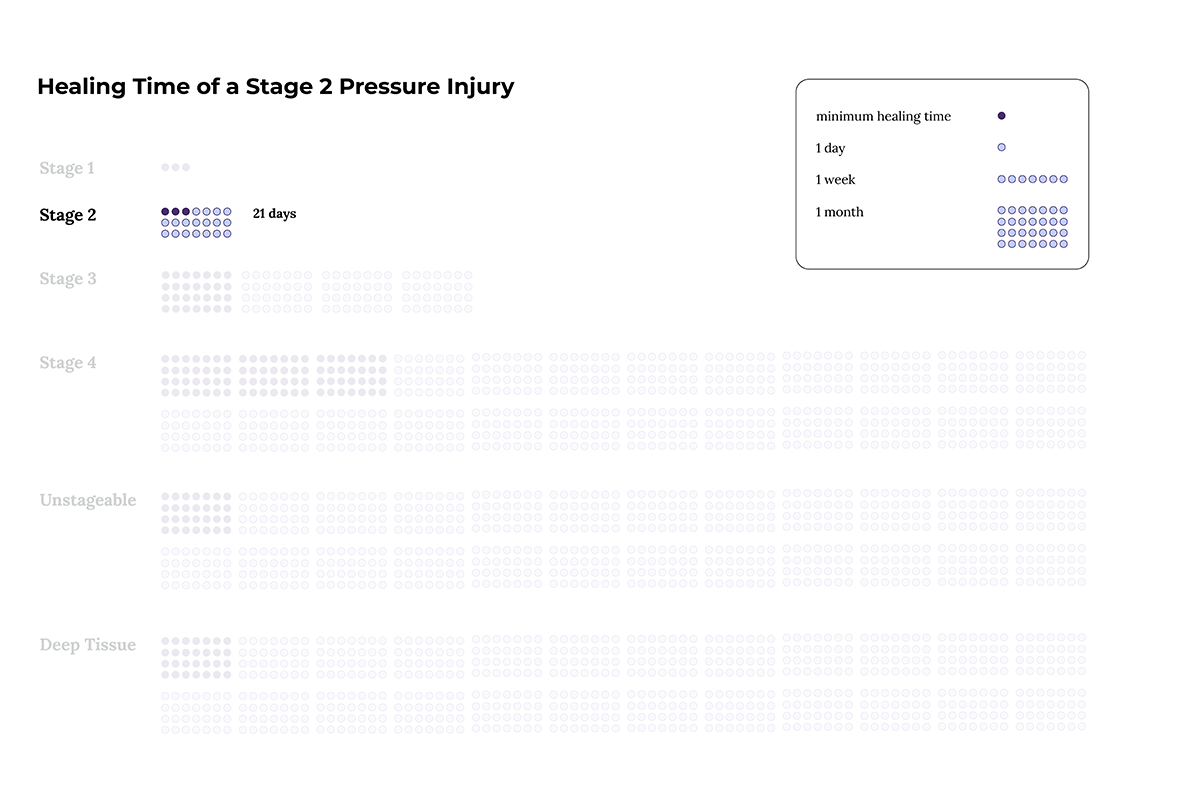
Stage 3 Pressure Injuries
A stage 3 pressure injury is an open wound that shows the top and middle layer of skin missing.
Click through the illustrations to see how pressure injuries may look on different skin colors and body parts.
What to look for:
Stage 3 pressure injuries can resemble open craters that go through the skin, revealing fat underneath. There may be some red growing tissue, or black dead tissue known as “eschar.” There might also be a yellowish discharge called “slough.” You may also notice local swelling, or an unpleasant odor, which may be signs of an infection. The area may also be hot.
In this stage, there can be tunneling and undermining, meaning the wound has progressed to form passageways underneath the edges of the skin. This means that the wound may be larger than it looks on the surface.
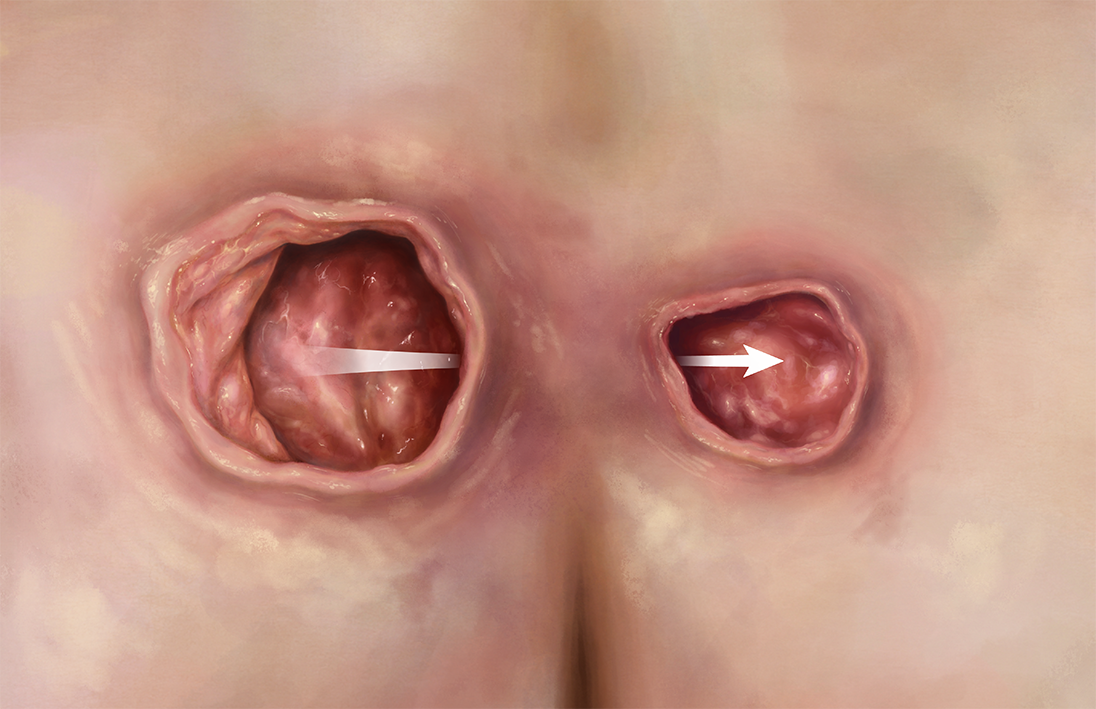
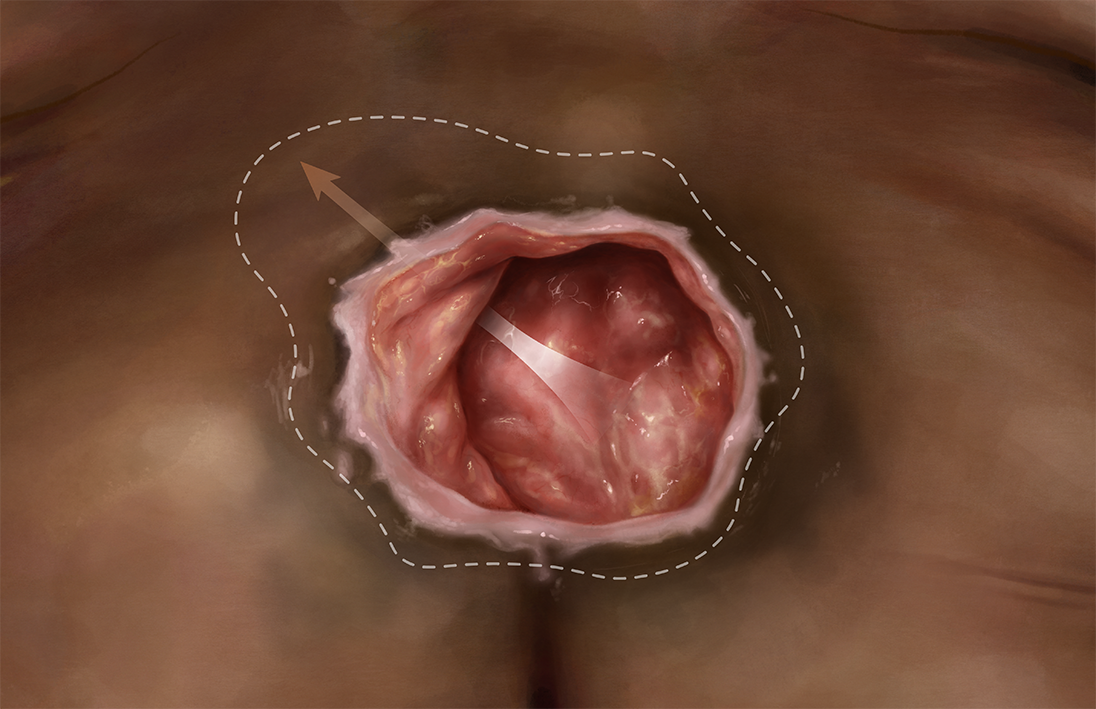
The back of the head and heel have very little fat underneath the skin, and stage 3 injuries can be very shallow in these areas.
Healing Time
If all pressure is removed, the injury could take more than 1-4 months to heal. This stage typically requires special care from healthcare professionals, and this timeline varies depending on factors such as the individual's nutritional intake, age, and whether they are following offloading routines or taking any medications.
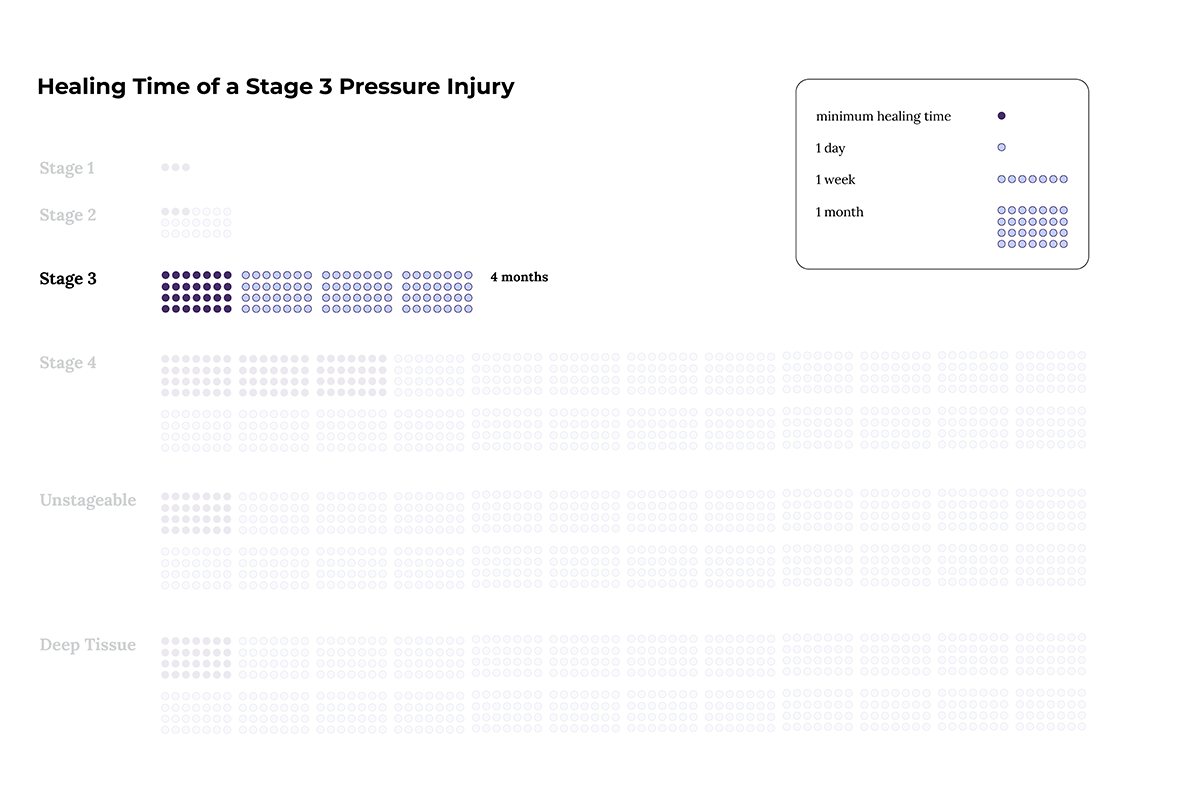
Stage 4 Pressure Injuries
An open wound that shows the full loss of skin and fat missing. This injury exposes muscle, tendon, or bone depending on the location and severity of the pressure injury.
Click through the illustrations to see how pressure injuries may look on different skin colors and body parts.
What to look for:
An open crater that goes through the skin and fat that reveals muscle, tendon, ligaments, cartilage, or bone. There may be some red growing tissue, or black dead tissue known as “eschar.” There might also be a yellowish discharge called “slough.” You may also notice local swelling, or an unpleasant odor. The area may also be hot.
In this stage, there can be tunneling or undermining, meaning the wound has progressed to form passageways underneath the edges of the skin. This means that the wound may be larger than it looks on the surface.


Healing Time
If all pressure is removed, the injury could take more than 3 months-2 years to heal. This stage requires specialized wound care from healthcare professionals and in some cases surgery. This timeline varies depending on factors such as the individual's nutritional intake, age, and whether they are following offloading routines or taking any medications.
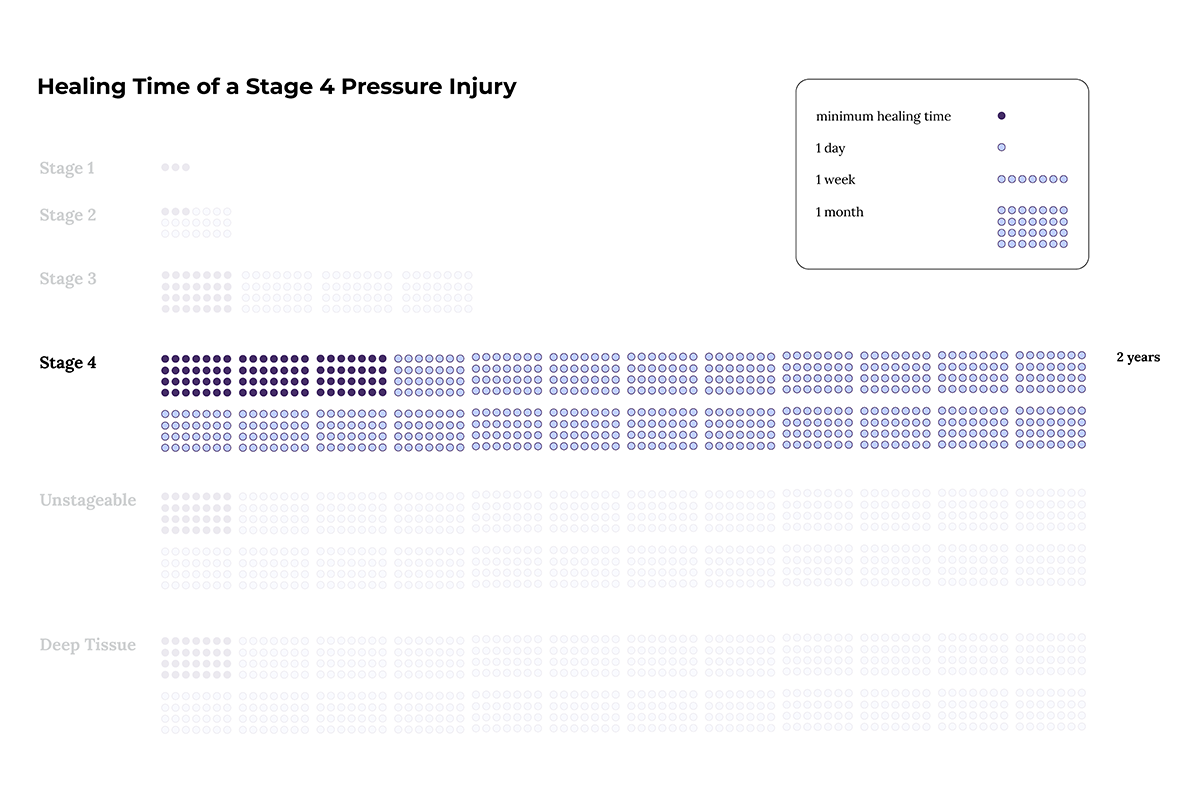
Unstageable Pressure Injuries
An unstageable pressure injury is characterized by an open wound that has been covered with dead tissue, such as slough or eschar.
Click through the illustrations to see how pressure injuries may look on different skin colors and body parts.
What to look for:
An open wound that is filled with dead tissue, discharge, or debris. The tissue or debris can be yellow, tan, green, grey, brown, or black. The depth of the wound can only be determined once the slough is removed, and then it is staged as a stage 3 or 4 pressure injury.
When the heels of the feet are healing, the heels may have dry, intact skin that is not red or squishy. This form of eschar is dry and acts as a natural dressing, and should not be removed, unless there are signs of infection such as pus.
Healing Time
Depending on whether this is a stage 3 or 4 injury, and if all pressure is removed, the injury could take anywhere from 1 month-2 years to heal. This stage requires bed rest and special care from healthcare professionals, such as specialized wound care, and sometimes surgery. This timeline varies depending on factors such as the individual's nutritional intake, age, and whether they are following offloading routines or taking any medications.
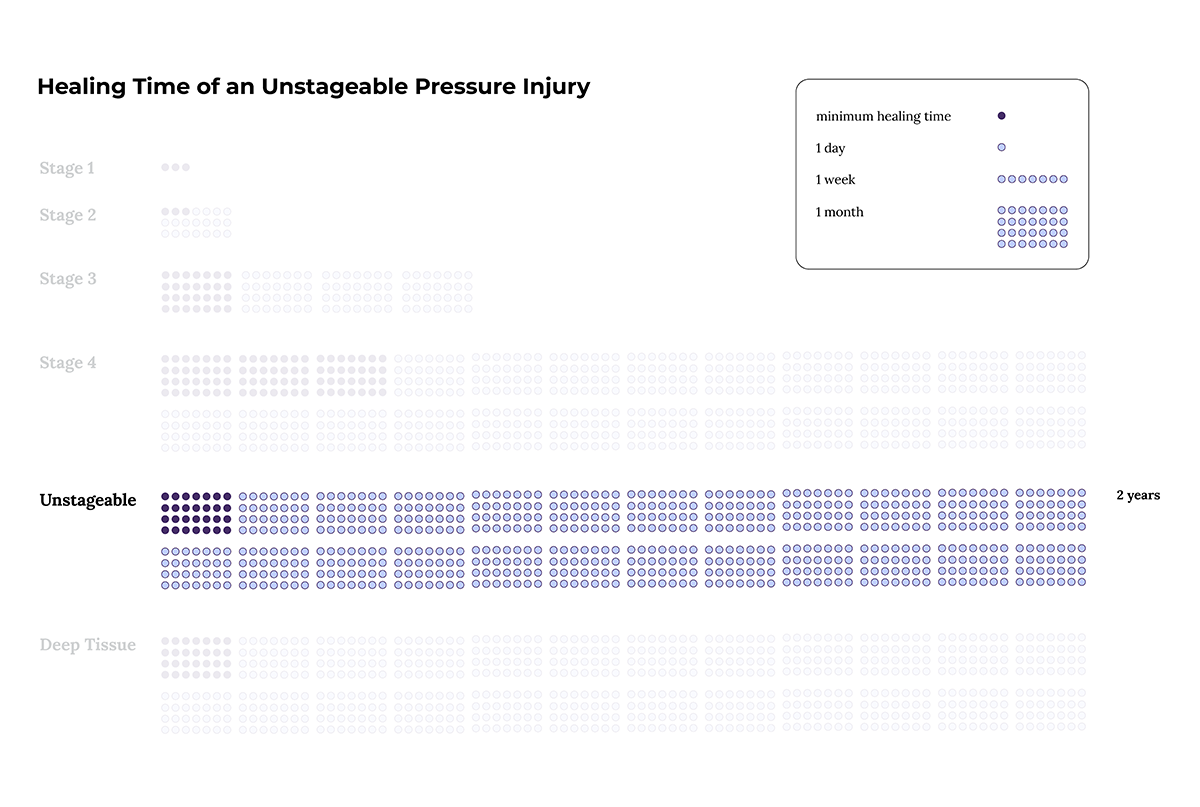
Deep Tissue Injury
A deep tissue pressure injury is identified as an area of deeply discolored skin or a blood blister. The soft tissue has been damaged from pressure or shear. What distinguishes this from other pressure injuries, is that the damage initially occurs at the deeper tissues underneath the skin and progressively works its way to the skin’s surface.
Click through the illustrations to see how pressure injuries may look on different skin colors and body parts.
What to look for:
An area of skin that is deep red, maroon, or purple, resembling a dark bruise. The skin may be painful, feel warmer or cooler, and be softer or harder than the surrounding skin. These injuries can quickly turn into a deep open wound and might still even get worse after treatment.
Deep tissue injuries may be difficult to identify on dark skin tones. Look out for skin discoloration with clearly defined edges. It may appear purple or maroon, or have blood-filled blisters. The affected tissue may be painful, firm, mushy, spongy, warmer, or cooler than the surrounding skin or the other unaffected side.
Healing Time
Depending on whether this is a stage 3 or 4 injury, and if all pressure is removed, the injury could take anywhere from 1 month-2 years to heal. This stage requires bed rest and special care from healthcare professionals, such as specialized wound care, and sometimes surgery. This timeline varies depending on factors such as the individual's nutritional intake, age, and whether they are following offloading routines or taking any medications.
